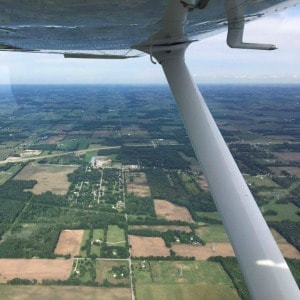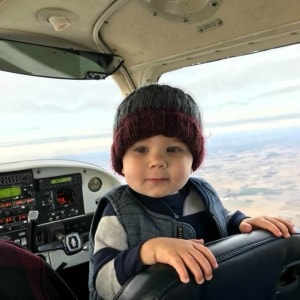
Steps to becoming a Private Pilot:
1. Be 16 years old to solo. (17 years old for your Private Pilot Certificate.)
2. Get a Third Class Medical (or Basic Med)
3. Apply for a Student Pilot Certificate
4. Pass a written Knowledge Test at an approved testing center
5. Fulfill Flight Training Requirements
6. Pass a practical test (also known as a checkride) with an examiner
Let’s dig into each of these a little deeper!
1. Be 16 years old to solo. (17 years old for your Private Pilot Certificate.)
You can take flight lessons at ANY age! However, in order to solo (fly the airplane by yourself), you must be 16 years old. Some people like to take flight lessons before they turn sixteen and then solo on their sixteenth birthday! You must be 17 years old to take the Practical Test (see number 5).
2. Your Medical
You do not need a medical to start your flying lessons, but you will need it in order to fly solo! You can find a list of Aviation Medical Examiners (AMEs) in your state at this website here. When you call, simply let them know that you wish to get your “Third-Class Medical”. If health issues or medications are a concern and you are not sure if you will pass a Third Class Medical, there is also a “Basic Med” option which you can read more about here. However, you will need to pass a Third Class Medical exam at least once to have “Basic Med”.
3. Student Pilot Certificate
Applying for a student pilot certificate is free! Find a flight instructor and they will help you with this process!
4. Pass a Knowledge Exam
This exam tests your knowledge about flight, the rules and regulations, and what you understand about the airplane. You can attend one of our FREE biannual ground schools to prepare you for this exam, or do a home study course such as Sporty’s free test prep, Rod Machado’s Private Pilot course, or Gleim (these are just a few examples).
Once you are ready to take the exam, you must go to an approved testing center, take a 60 question test on a computer, and pass with a score of at least 70%. You can find a list of testing centers in Indiana here.
The knowledge exam can be taken at any time during flight training. It only must be finished by the time you are ready to take your practical test. Some students like to take it before flight lessons so that it is done and they don’t have to worry about it. Other students prefer to take it later on in their flight training as some of the concepts make more sense once you’ve used them.
5. Meet the flight training requirements
The list below is a general overview. Click here for an official and complete list.
At least 40 hours of total flight time
– 20 hours of training from an instructor
- 3 hours instrument training
- 3 hours cross country training
- 3 hours night flight training
- 1 night cross-country of at least 100 nautical miles
- 10 takeoffs and 10 landings at night
- 3 hours of flight training in preparation for the practical test
– 10 hours solo flight time
- 5 hours solo cross country time
- 1 solo cross-country of 150 nautical miles with full stop landings at three points, and one leg of the flight at least a 50 nautical mile straight line distance between takeoff and landing locations
- 3 takeoffs and landings at an airport with an operating control tower
6. Pass the Practical Test
Once you’ve met all of the requirements for getting your Private Pilot’s certificate, and your instructor knows that you’re ready, he or she will sign you off to go take the “practical test”, also known as the checkride. You will meet with an examiner who will sit down with you and ask you questions to test your knowledge, and have you do practical things such as plan a cross country flight. This is called the “oral” portion of the exam. Then you will go out and demonstrate some of the maneuvers and landings that you’ve been practicing all along. Once you have passed this test, you are a certified Private Pilot!!!
Useful Links for Students
- FREE Ground School! Click here to learn more!
- FREE "Study Buddy" from Sporty's: A test prep computer program.
- Get weather briefings and plan flights
- FREE app that does everything ForeFlight does
- App on iTunes: FltPlanGO
- App on Google Play: FltPlanGO
- Not a legal source for weather and navigation, but still good info.
- Video: How to Use the E6B Flight Computer
- FAR/AIM:
- Boldmethod.com:
- Video: 5 Types of Altitude Explained
- Find out all the information you ever wanted to know about any airport 🙂
- Listen to real pilots and air traffic controllers in real time.
- Not sure what that symbol means? Look it up here!
- This is not an official weather briefing site, but if you are a member of AOPA, you get to have free access to this helpful tool.


